BENTONITE
Content Overview
INTRODUCTION OF BENTONITE
During the weathering process, volcanic ash turns into the naturally occurring clay mineral known as Bentonite. Due to its special properties, including as high-water absorption and swelling capacity, cation exchange ability, and thixotropic behavior, it is frequently utilized in a range of industrial, environmental, and agricultural applications. This adaptable substance has established itself as a necessary component in numerous goods and procedures, making it a significant mineral resource on a global scale.
We export the highest-quality Bentonite in different types and grades from Iran, Turkey, and the UAE to other countries around the world.
• Iran Bentonite
• Turkey Bentonite
• UAE Bentonite
WHAT IS BENTONITE?
The mineral montmorillonite, a hydrous aluminum silicate, forms the basis of the clay variety called bentonite. It is a mineral that is extremely porous and absorbent, and when it comes into touch with water, it has the capacity of swelling up too many times its original volume. Like other minerals like zeolite, feldspar, and quartz, bentonite is frequently found in deposits that are found in volcanic ash beds.
BENTONITE IN DRILLING
Bentonite, as one of the drilling products, is a key component of the drilling fluids used to lubricate and cool the drill bit during drilling operations. The drilling fluid, commonly referred to as “mud,” aids in stabilizing the borehole and preventing the walls from collapsing. Carrying drill bit cuttings to the surface, where they may be retrieved and examined, also helps.
Controlling viscosity and fluid loss is bentonite’s primary role in drilling fluids. Bentonite’s excellent colloidal characteristic makes it perfect for suspending particles and increasing the viscosity of drilling fluid. Moreover, it aids in lowering fluid loss in permeable formations, limiting mud loss into the formation, and assuring borehole stability.
Depending on the desired characteristics of the mud, bentonite is often added to the drilling fluid in percentages ranging from 1 to 4%. The quantity of bentonite used will vary based on the particular drilling formation as well as other elements including drilling technique, temperature, and pressure.
BENTONITE FORMS
Powdered Bentonite:
Natural bentonite is ground to a fine powder to create powdered bentonite, which is the most used kind of bentonite. It is often used in the drilling, foundry, and cosmetics industries.
Lump Bentonite:
Bentonite that has not been finely processed into a powder is called lump bentonite. It is often employed as a sealer or binder in sectors including building and agriculture.
Granular Bentonite:
Bentonite is crushed into granules of various sizes, usually between 2 and 4 mm, to produce granular bentonite. It often appears in applications for sealing soil.
Pelletized Bentonite:
Bentonite is crushed into tiny pellets or granules, usually with a diameter of 1 cm, to create pelletized bentonite. It is often used to soil amendments in agriculture and water treatment.
Liquid Bentonite:
Bentonite particles suspended in water are known as liquid bentonite. As a drilling mud additive, it is often employed in drilling operations to increase the viscosity and lubricity of the drilling fluid. Moreover, it may be used to make coatings, sealants, and adhesives.
Bentonite Sheets:
A layer of bentonite is sandwiched between two layers of geotextile fabric to create bentonite sheets, which are thin sheets. They are often used in building applications as a waterproofing material.
BENTONITE CHEMICAL FORMULA, CAS NUMBER, AND HS CODE
Bentonite Chemical Formula:
Bentonite is a clay mineral that is composed primarily of montmorillonite, which is a hydrated aluminum silicate. The chemical formula for bentonite is typically Al2O3·4SiO2·nH2O, where n can vary depending on the degree of hydration. The exact chemical formula of bentonite can vary depending on its source and how it has been processed.
Bentonite CAS number:
The CAS number for bentonite is 1302-78-9. This is a unique identifier assigned to the substance by the Chemical Abstracts Service (CAS) to allow for easy identification of the substance in various scientific and regulatory contexts.
Bentonite HS code:
The HS code (Harmonized System code) for bentonite is 2508.10. This code is used to classify the product for customs and trade purposes and is recognized globally.
BENTONITE TYPES
Bentonite comes in a variety of forms, each with its own special set of properties and applications. The most typical varieties of bentonite are listed below:
- Sodium Bentonite: This kind of bentonite is distinguished by a strong capacity for swelling and water absorption. It is frequently utilized in the creation of cat litter, drilling mud, and sealing compounds for ponds and landfills.
- Calcium Bentonite: Compared to sodium bentonite, this form of bentonite has a lower swelling capacity and is less absorbent. It is frequently employed in the manufacture of cosmetics and as a binding agent in foundry sand.
- Bentonite that has been polymer-modified is a modified form of sodium bentonite that has been given a polymer treatment to improve its properties. It is frequently employed in the remediation of contaminated soil and drilling mud.
- Bentonite made of potassium is comparable to sodium bentonite but has a greater capability for exchanging cations. It is frequently employed in agriculture to increase soil fertility and provide animal feed.
BENTONITE MINING AND BENTONITE MANUFACTURING
In open-pit mining, the bentonite deposit is exposed by removing the soil and rock that were previously covering it. Following that, the material is extracted using a number of techniques, including as blasting, hydraulic mining, and mechanical excavation. When the bentonite has been extracted, it is taken to processing facilities where it is further treated and refined into various grades and varieties of bentonite.
With the purpose of removing impurities, lowering moisture content, and improving the material’s properties, bentonite is subjected to a variety of mechanical and chemical treatments. Depending on the bentonite’s intended application, specific processing techniques may vary, but often entail a mixture of crushing, drying, grinding, and mixing.
The raw bentonite is broken down into little pieces during processing, then dried to eliminate extra moisture before being milled into a fine powder. The powder is then combined with liquids, such as water or other liquids, to create a slurry, which can then be processed further to create granules, pellets, or powders.
To guarantee uniformity in the physical and chemical properties of the finished product, high-quality bentonite manufacture calls for stringent quality control procedures. Regular testing of the raw materials, observation of the processing conditions, and quality control inspections all through the production process are required for this.
Bentonite Mining and Production’s Environmental Effects:
Bentonite mining and production can have both favorable and unfavorable effects on the environment, like any other mining and manufacturing activity. If not adequately controlled, bentonite mining can cause soil erosion, habitat degradation, and water contamination while also creating jobs and benefiting the local economy.
Water resources in the area may be impacted by the use of water in the processing of bentonite, particularly in dry and semi-arid areas where water is in short supply. Through the application of sustainable mining procedures, the use of recycling and water conservation techniques, and the restoration of mined lands, efforts are being made to reduce the negative effects of bentonite mining and production on the environment.
Discovering the Versatility and Sustainability of Bentonite:
A distinctive and adaptable mineral called bentonite is now used as a necessary ingredient in numerous goods and procedures. Its distinctive properties, such as high-water absorption and swelling capacity, make it useful in a wide range of industries, including agriculture, oil and gas, foundry, and cosmetics.
Although the mining and production of bentonite can have an adverse effect on the environment, attempts are being made to reduce this impact through the use of sustainable mining techniques as well as recycling and water conservation measures.
As the demand for bentonite increases, it is crucial that we strike a balance between the economic advantages and the need to safeguard the environment and maintain the sustainable use of this priceless mineral resource.
With its versatility and availability in a variety of forms and packaging options, bentonite is a mineral that may be employed in a wide range of applications. The bentonite’s intended purpose, the quantity needed, and the logistics of handling and transportation will all influence the packaging option.
BENTONITE SPECIFICATIONS
Bentonite is a naturally occurring clay mineral with special physical and chemical properties that make it useful in numerous industrial and commercial applications. Depending on the intended usage, the specifications for bentonite can change, however some typical requirements are as follows:
- The performance of the material in diverse applications is influenced by its particle size, which is a crucial criterion for bentonite. Depending on the intended usage, the particle size of bentonite can range from a few microns to several hundred microns, and it is commonly measured in microns.
- Moisture content: Depending on the source and the technique used for processing, the moisture content of bentonite can change. For untreated bentonite, the moisture content is commonly reported as a percentage and can range from 10% to 15% to as low as 1% for processed bentonite.
- Bentonite’s tendency to swell in the presence of water makes it beneficial in a variety of applications, including drilling, sealing, and soil stability. Often expressed in ml/g, the swelling capacity of bentonite can range from a few hundred to several thousand ml/g, depending on the type and grade of bentonite.
- High cation exchange capacity (CEC) means that bentonite can exchange cations with other substances in solution. Due to its ability to remove heavy metals and other impurities from water, it can be used in wastewater treatment applications. Often expressed in meq/100g, the CEC of bentonite can range from 50 to 150 meq/100g, depending on the kind and grade of bentonite.
- Chemical makeup: Depending on the source and processing technique, the chemical composition of bentonite can change. The three primary ingredients that make up bentonite are illite, kaolinite, and montmorillonite, with montmorillonite playing the most significant role. Trace metals including calcium, magnesium, and iron are possible inclusions in the chemical makeup of bentonite.
- Depending on the source and processing method, Bentonite can range in color from pale beige to dark brown.
- It is crucial to speak with the supplier or manufacturer to confirm that the product complies with the requirements for the specific application because the specifications of bentonite can change depending on the intended use.
| Requirements | Unit | Specification |
| Viscometer dial reading at 600 rpm | Min30 | |
| Ratio | Max3 | |
| Residue on ASTM sieve NO 200 | wt% | Max4 |
| filtrate | MI | Max 15 |
| Moisture | wt% | Max 10 |
BENTONITE PROPERTIES
Bentonite is a naturally occurring clay mineral that has special physical and chemical properties that make it valuable in a variety of industrial and commercial applications. Bentonite has a number of important properties, including:
- Bentonite can swell up too many times its original volume when exposed to water because of its great capacity for water absorption. This characteristic makes it suitable as a sealing substance for ponds, canals, and other water containment structures, as well as in drilling fluids to control borehole stability and prevent fluid loss.
- Thixotropy: Bentonite has thixotropic properties, which means that when it is moved or agitated, it loses viscosity and when it is left undisturbed, it resumes its initial state. Due to its ability to suspend and move drill cuttings to the surface, it is helpful in drilling fluids.
- Bentonite can exchange cations with other substances in solution thanks to its high cation exchange capacity (CEC). Due to its ability to remove heavy metals and other impurities from water, it can be used in wastewater treatment applications.
- Bentonite can draw in and cling onto other molecules on its surface thanks to its strong adsorption capability. Because it can absorb and trap scents, this feature makes it helpful in applications like cat litter.
- Its plasticity allows for the molding of bentonite into a variety of shapes. This characteristic makes it helpful as a plasticizer and binder in ceramics.
- Large surface area: Because of its large surface area, bentonite can interact with other materials at the molecular level. Due to its huge surface area for reactants to interact on, this feature makes it helpful in catalyst applications where it can improve chemical processes.
- Thermal stability: Bentonite can resist high temperatures without degrading. Due to its characteristic, it can be utilized as a binder for casting molds in applications like foundry sand.
In general, bentonite is a desirable and adaptable material for a variety of industrial and commercial applications due to its singular mix of physical and chemical properties.
BENTONITE APPLICATIONS
Due to its special properties, bentonite has a variety of applications in various industries. Bentonite is frequently used for the following purposes:
- Drilling Mud: Bentonite is frequently used as a drilling fluid in the oil and gas sector to cool and lubricate drill bits as well as to flush out drill cuttings from the wellbore. It assists in maintaining wellbore stability and averting drilling hole collapse.
- Foundry Sand: Bentonite is used as a bonding substance in foundry sand to increase the sand molds used in metal casting’s hardness and endurance.
- Cat Litter: Because of its capacity to absorb and hold moisture as well as reduce odor, bentonite is used in the manufacture of cat litter.
- Bentonite is a thickening, emulsifying, and stabilizing ingredient found in cosmetics including facial masks, body scrubs, and bath soaps.
- Applications in the Environment: Since bentonite can absorb heavy metals and other contaminants, it is employed in the remediation of polluted soil and groundwater.
- Agriculture: Bentonite is used as a soil amendment to strengthen the soil, increase its capacity to hold water, and improve plants’ ability to absorb nutrients.
BENTONITE PACKING
The following stages are commonly included in packaging bentonite:
1- The choice of packing material: Bentonite may be put into bags, drums, and bulk containers, among other things. The use, transportation needs, and quantity of goods to be packaged all influence the choice of packing material.
- 25, 40, and 50 kilogram bags are available.
- 1.15 MT, 1.25 MT, and 1.0 MT Jumbo Bags, respectively.
- Loose bulks in 1*20 FCL 25-27 tons are possible (Lump form).
2- Bentonite is typically weighed and manually (or with the aid of a filling machine) poured into the packing material. Each packet of bentonite has to be filled with the proper amount of material, thus care should be made.
3- Bentonite packaging is often sealed once it has been filled with the material in order to keep impurities and moisture out. Depending on the kind of packing material, sealing techniques may include heat sealing, stitching, or the use of a tie or clip-style closure.
4- The packed bentonite is then palletized and tagged with product details such the product name, weight, and batch number. After that, the items are palletized and plastic-wrapped to maintain stability throughout shipment.
To guarantee the quality and uniformity of the bentonite product, it is crucial to adhere to suitable packaging techniques. In order to avoid any possible risks, proper safety precautions should also be performed throughout the packaging process.
Petro Naft provides Bentonite of the best quality in a variety of types and grades and exports them from Iran, Turkey, and the United Arab Emirates to other nations worldwide.
• Bentonite Iran
• Bentonite Turkey
• Bentonite Emirates
Explore related articles on this product via the tag link below:

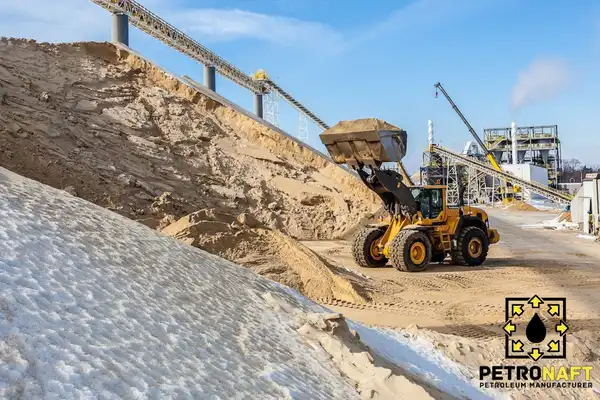
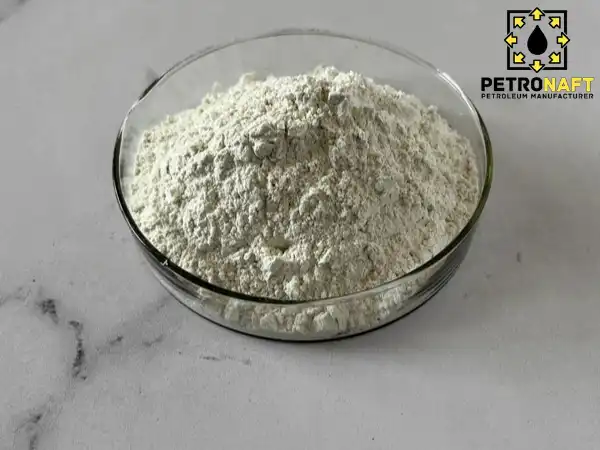
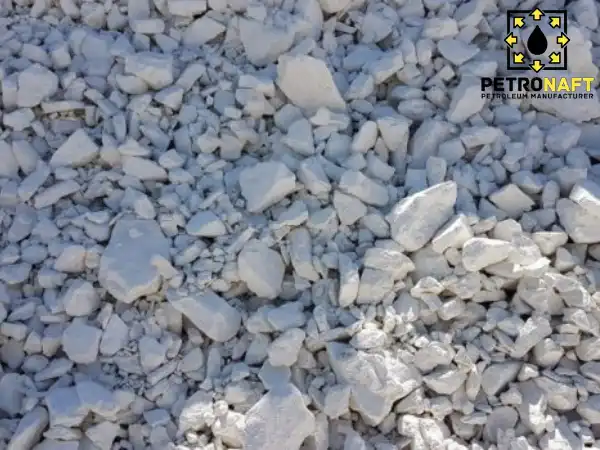
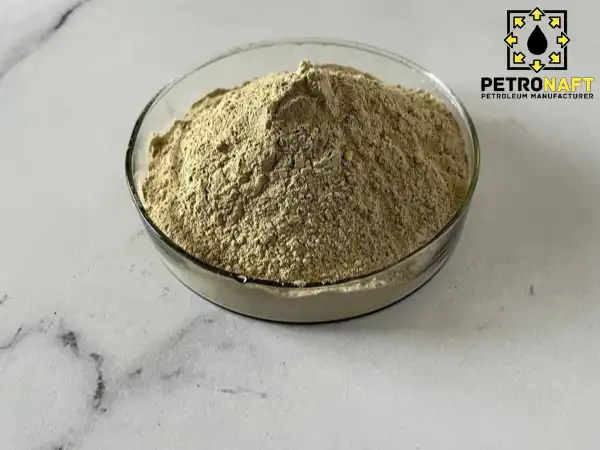
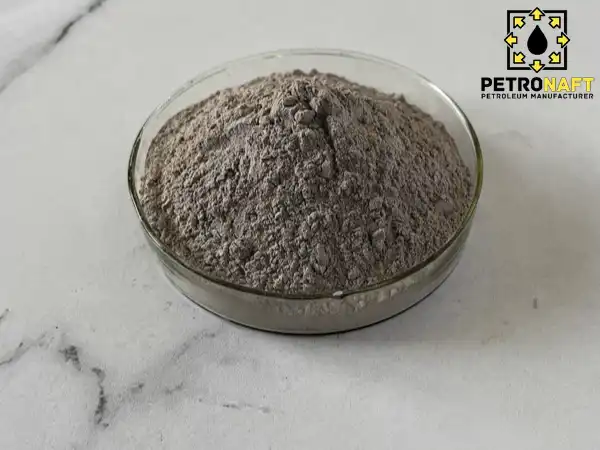


Is Sodium Alginate and Bentonite clay mixture available in market which can be used for Color improvement in organic products.
Yes, mixtures of Sodium Alginate and Bentonite Clay are available and effective for color improvement in organic products. These combinations are widely recognized for their ability to adsorb and remove various dyes and pigments from solutions, making them suitable for use in processes that require decolorization. The blend of Sodium Alginate, a natural flocculant, and Bentonite, a natural clay, enhances the efficiency of removing color from organic substances. This mixture is particularly useful in achieving high removal rates for basic dyes like Malachite Green and Methylene Blue.
Additionally, the combination is eco-friendly and biodegradable, providing an environmentally responsible alternative for industries seeking natural methods to improve the appearance of organic products. Its adsorption capacity is high, and the material is regenerable, making it a sustainable choice for continuous use in color improvement processes.
Na-bentonite lumps with specifications (API) and the (qty. 3000 ton) we need as (CIF) UMM-QASER/ IRAQ port,PLS SEND US YOUR PRICES,thanks.
best regards
eng. Basil
Dear Eng. Basil,
Thank you for your interest in our Na-bentonite lumps with API specifications. We’re ready to supply the quantity of 3000 tons CIF to UMM-QASER/IRAQ port. To provide you with an accurate and competitive pricing, please contact us directly at [email protected]. We will ensure you get all the necessary details and support for your requirements.